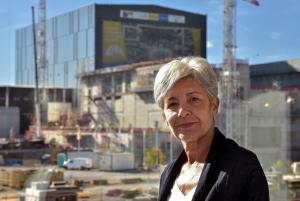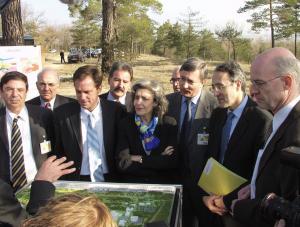"I can't think of a more meaningful project for the future of mankind"
During the year 2003 Claudie Haigneré, French minister of Research and New Technologies and a former astronaut¹, was a regular visitor to the Cadarache forest. There, near a mockup of the future ITER installation set up amid the venerable oaks and pines, she would tirelessly absorb the explanations provided by fusion scientists and affirm her "determination" to see ITER become a reality ... on that very spot.
The year 2003 was a decisive one for ITER. The United States, which had left the project in 1998, was back with renewed determination. China and Korea had joined the original four Members. And although Canada was not an ITER Member, a group of industries, universities and trade unions from Ontario had submitted the first bid to host the project. Japan was officially offering the site of Rokkasho Mura, and Europe had two sites to propose: Vandellòs in Spain and Cadarache in France.
"As Minister of Research, space policy and ITER were on the top of my agenda," says Haigneré, who was on site last week to participate in the autumn assembly of the EIROForum (see box below). "We needed to convince the ITER Members that because of the fusion expertise accumulated in Europe, and more specifically at CEA-Cadarache, this was the place to host the installation."
"I can't think of a more meaningful project for the future of mankind. ITER is something we cannot afford not to do."



